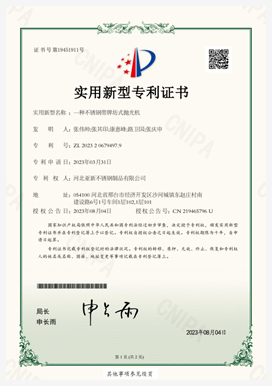Binder Reaper Device for Efficient Harvesting and Crop Management
The Binder Reaper Machine Revolutionizing Agriculture
The binder reaper machine has played a pivotal role in transforming agricultural practices, marking a significant advancement in farming technology. This remarkable invention, which combines the functions of binding and reaping, has revolutionized the way farmers harvest their crops, particularly grains like wheat and barley.
Historically, harvesting crops was a labor-intensive process that often required a large workforce and numerous hours in the fields. Traditional methods involved hand-harvesting, where farmers would use sickles or scythes to cut down the crops. This process was not only physically demanding but also time-consuming, especially during peak harvest seasons. As populations grew and the demand for food increased, the need for more efficient agricultural practices became evident.
The introduction of the binder reaper machine marked a significant turning point in farming. Invented in the mid-19th century, it automated the process of cutting crops and binding them into sheaves, thus minimizing the labor required and increasing overall efficiency. The design of the binder reaper machine generally consists of a cutting bar, a reel to guide the crops into the cutter, and a binding mechanism that ties the cut stalks together using twine or wire. This streamlined process allowed farmers to cover larger areas in a shorter amount of time, ultimately leading to higher yields.
binder reaper machine

One of the most significant advantages of the binder reaper machine is its ability to reduce harvest losses. Traditional harvesting methods often resulted in a significant amount of grain left unharvested or damaged. The binder reaper machine minimizes this waste, ensuring that a higher percentage of the crop is collected and brought to market. This efficiency not only increases the profitability of farms but also contributes to overall food security.
Moreover, the binder reaper machine has evolved over the years, with advancements in technology leading to the development of more sophisticated models. Modern variants are often equipped with powered systems, GPS technology, and advanced cutting mechanisms that enhance precision and speed. Farmers now benefit from machines that can adapt to different field conditions, making harvesting a more uniform and efficient process.
In addition to its practical benefits, the binder reaper machine also has social implications. By increasing productivity, it has allowed for the reduction of labor costs, enabling farmers to invest in other areas of their operations. Furthermore, the efficiency of these machines has led to a decline in the reliance on manual labor, which has shifted the labor landscape in rural areas.
In conclusion, the binder reaper machine represents a significant advancement in agricultural technology. It has transformed the harvesting process, making it faster, more efficient, and less labor-intensive. As the global population continues to rise, technologies like the binder reaper will play an essential role in ensuring that food production keeps pace with demand. The legacy of this invention is evident in the way modern agriculture operates today, emphasizing efficiency, productivity, and sustainability. As we look to the future, the ongoing evolution of agricultural machinery will undoubtedly continue to shape the landscape of farming for generations to come.
Latest news
-
When to Upgrade Your Old Forage HarvesterNewsJun.05,2025
-
One Forage Harvester for All Your NeedsNewsJun.05,2025
-
Mastering the Grass Reaper MachineNewsJun.05,2025
-
How Small Farms Make Full Use of Wheat ReaperNewsJun.05,2025
-
Harvesting Wheat the Easy Way: Use a Mini Tractor ReaperNewsJun.05,2025
-
Growing Demand for the Mini Tractor Reaper in AsiaNewsJun.05,2025
